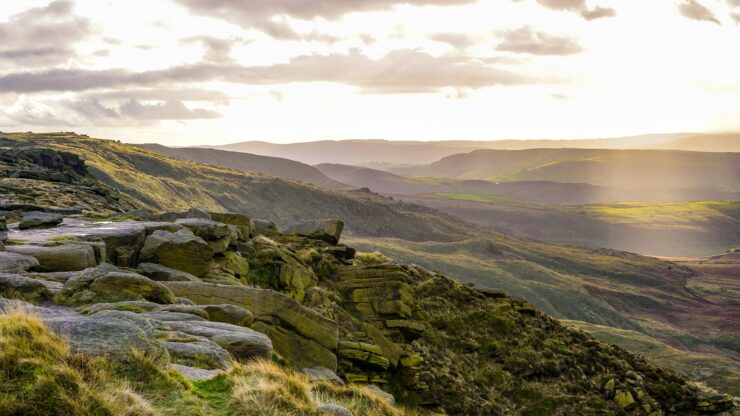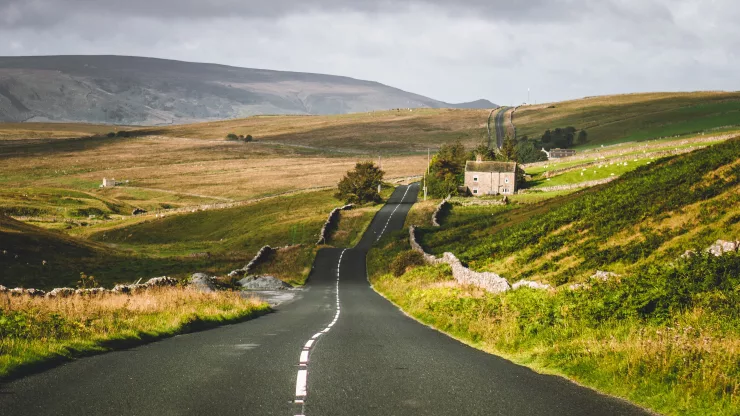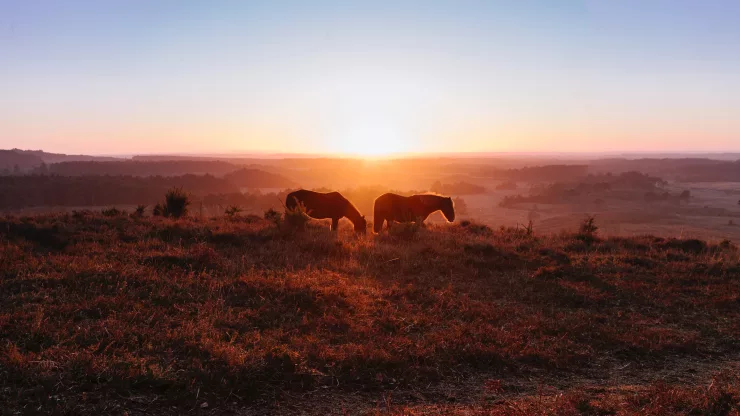Exmoor National Park: England’s Magnificent Wildlife
Exmoor National Park, located in the southwest of England, is known for its breathtaking landscapes and unique wildlife.
Covering over 267 square miles, it is home to a diverse range of species, including mammals, birds, amphibians, and reptiles.
The park’s rich wildlife heritage is a testament to its importance as a protected area.
Jump to Section
Introduction
Exmoor National Park is a place of natural beauty, with its rolling hills, heather moorlands, and deep valleys.
It is a protected area where wildlife thrives, making it a popular destination for nature lovers, hikers, and wildlife enthusiasts.
The park is home to some of England’s most iconic species, including the Exmoor Pony and Red Deer.
Wildlife in Exmoor National Park
Mammals
Red Deer – The Red Deer is the largest wild animal in the park and is a popular sight for visitors.
The males have impressive antlers, which they shed every year.
Exmoor Ponies – The Exmoor Pony is a hardy breed that has lived in the area for thousands of years.
They roam freely in the park and can often be seen grazing on the hills.
Otters – Otters are elusive creatures that live along the rivers and streams in the park.
They are a protected species and are most active at dawn and dusk.
Badgers – Badgers are nocturnal animals that live in underground setts.
They are often seen foraging for food at night.
Birds
Peregrine Falcons – Peregrine Falcons are the fastest birds in the world, reaching speeds of up to 240mph.
They nest on the cliffs in the park and can be seen hunting for prey.
Red Kites – Red Kites were once extinct in England but have now been successfully reintroduced.
They are a spectacular sight, soaring high in the sky.
Buzzards – Buzzards are a common sight in the park, often seen circling high in the sky.
They feed on small mammals and birds.
Ravens – Ravens are the largest members of the crow family and can often be seen flying over the moorlands.
Amphibians and Reptiles
Adders – Adders are the only venomous snake in the UK and are found in the heathlands and woodlands of the park.
Common Toads – Common Toads are found in the ponds and streams of the park.
They are most active at night.
Palmate Newts – Palmate Newts are small amphibians that live in the ponds and streams of the park.
They are easily recognized by their webbed feet.
Common Lizards – Common Lizards are found in the heathlands and woodlands of the park.
They are most active during the day.
Conservation Efforts in Exmoor National Park
Habitat Management
Moorland Management – The moorlands are managed to maintain a healthy balance of heather and grasses, which provides food and shelter for a range of species.
Woodland Management – The woodlands are managed to maintain a variety of habitats, from open glades to dense forest, which provides a home for a range of species.
River Restoration – The rivers are managed to maintain a healthy flow of water and to prevent erosion, which provides a habitat for fish, otters, and other aquatic species.
Coastal Conservation – The coastline is managed to protect the habitats of seabirds, seals, and other marine species.
Protected Species
European Protected Species – The park is home to a number of species that are protected by European law, including the otter, badger, and peregrine falcon.
UK Biodiversity Action Plan Species – The park is home to a number of species that are listed under the UK Biodiversity Action Plan, including the red kite and common toad.
Rare and Endangered Species – The park is home to a number of rare and endangered species, including the Exmoor pony and adder.
Ecotourism in Exmoor National Park
Activities
Guided wildlife walks – Guided wildlife walks are a popular way to explore the park and learn about its wildlife.
Wildlife watching – Wildlife watching is a popular activity in the park, with many species easily visible from the footpaths and trails.
Photography tours – Photography tours are a great way to capture the beauty of the park and its wildlife.
Horse riding – Horse riding is a popular way to explore the park, with many local stables offering guided rides.
Responsible Tourism
Guidelines for visitors – Visitors are encouraged to follow the park’s guidelines for responsible tourism, which includes staying on designated paths and not disturbing wildlife.
Sustainable tourism practices – Local businesses in the park are encouraged to adopt sustainable tourism practices, such as reducing plastic waste and supporting local conservation efforts.
Supporting local conservation efforts – Visitors are encouraged to support local conservation efforts by donating to conservation projects and supporting local businesses that are committed to sustainable tourism.
Conclusion
Exmoor National Park is a unique and beautiful place, with a rich wildlife heritage that is a testament to its importance as a protected area.
From the majestic Red Deer to the elusive Otter, the park is home to a diverse range of species that are a joy to observe.
The park’s conservation efforts, from habitat management to protecting rare and endangered species, ensure that its wildlife will continue to thrive for generations to come.
We encourage you to visit and support the park’s preservation.
Frequently Asked Questions
What is the best time to visit Exmoor National Park?
The best time to visit Exmoor National Park is during the summer months, from June to August, when the weather is mild and the days are long.
However, the park is beautiful year-round, with each season offering a unique experience.
Can I see the Exmoor Ponies in the wild?
Yes, the Exmoor Ponies roam freely in the park and can often be seen grazing on the hills.
However, they are wild animals and should not be approached or fed.
Are dogs allowed in the park?
Yes, dogs are allowed in the park but must be kept on a leash at all times. They must also be kept away from wildlife and livestock.
Is there accommodation available in the park?
Yes, there is a range of accommodation available in and around the park, from campsites to luxury hotels.
It is recommended to book in advance, especially during peak season.
I’m a nature enthusiast and creator of Metro Wilds and have spent years exploring the great outdoors.
With a passion for environmental conservation and sustainability, I have dedicated my career to writing about the beauty and wonders of nature, as well as the threats facing our planet.
Contact me at [email protected] for assistance.





